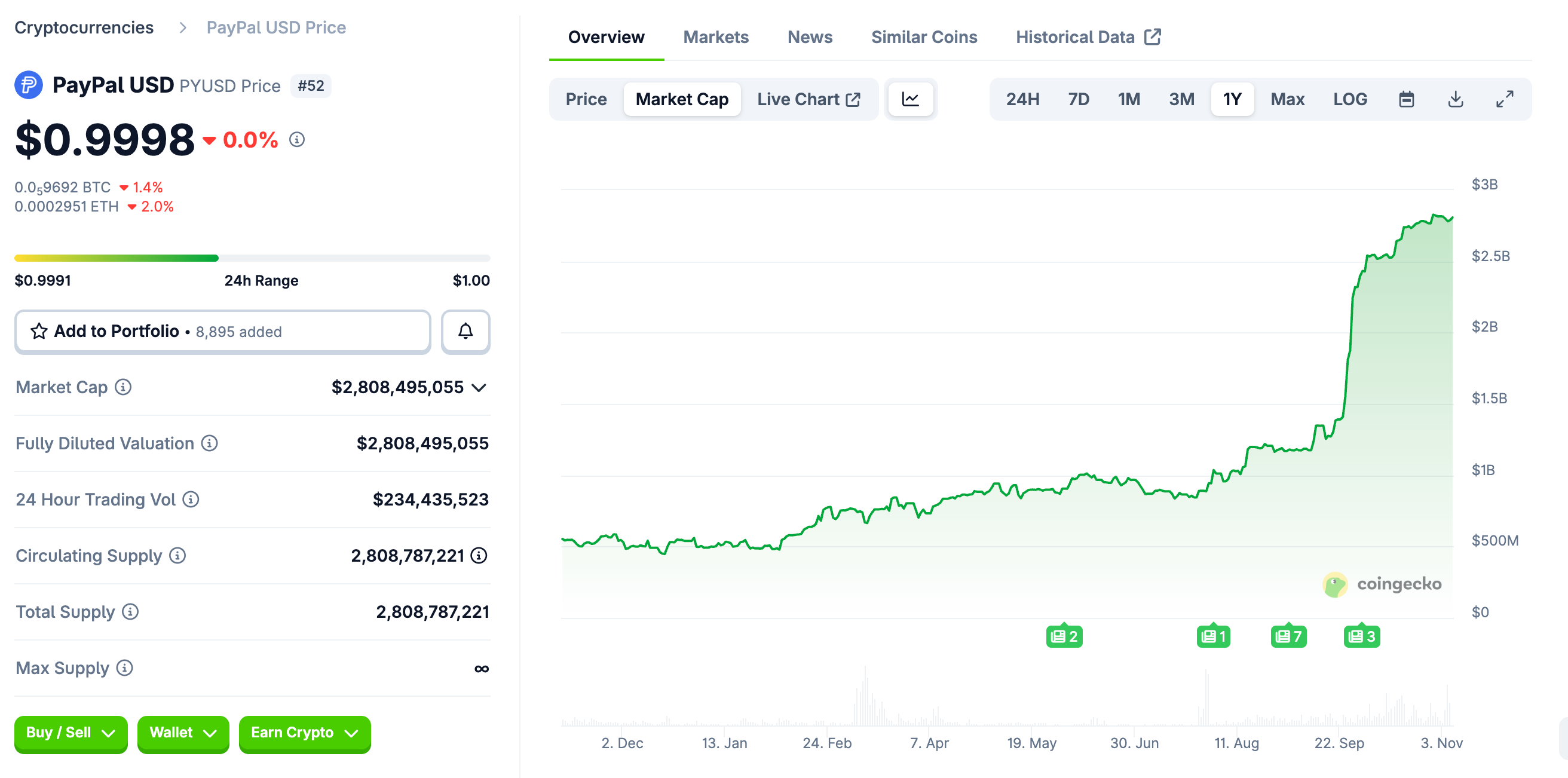UK's Stablecoin Regulation Set for 2026 Rollout
The UK plans to launch stablecoin regulations by late 2026, reflecting a significant rise in crypto users and aligning with US regulatory efforts.
The United Kingdom is gearing up for a major consultation on stablecoin regulations, scheduled to commence on November 10. The aim is to implement these regulations by late 2026, strategically aligning with regulatory developments in the United States. This initiative comes at a time when the UK's cryptocurrency user base has skyrocketed to 7 million, a remarkable increase from just 2.3 million four years ago, reflecting a staggering 204% growth.
Prominent stablecoin issuers such as Circle, Tether, and PayPal are actively positioning themselves to enter the burgeoning regulated market in the UK.

The UK government has confirmed its plans to roll out a comprehensive regulatory framework for stablecoins, particularly following the passage of the US GENIUS Act. According to officials privy to the discussions, the Bank of England will mandate stablecoin issuers to maintain reserves in government bonds or short-term securities. Meanwhile, the Financial Conduct Authority (FCA) has unveiled a roadmap for crypto assets that outlines a phased implementation strategy leading up to 2026.

This upcoming consultation will seek industry input on various aspects, including reserve requirements, auditing procedures, and standards for transparency. Notably, the issuance of stablecoins in the UK has surged by 40% year-over-year, highlighting the growing momentum in the market prior to regulatory implementation. The overarching goal of the framework is to strike a balance between fostering innovation and ensuring consumer protection as the UK aims to establish itself as a competitive hub for digital asset enterprises.
The 7 million cryptocurrency holders in the UK represent a significant market opportunity for regulated stablecoin services. Enhancing cross-border payment efficiency and integrating with existing financial systems remain key priorities for both regulators and market stakeholders as the consultation period gets underway.

Circle has taken proactive steps by securing licensing in France for both EURC and USDC under the EU’s MiCA regulation, positioning itself for broader expansion throughout Europe. Tether's USDT continues to hold a dominant share of the global market, although scrutiny surrounding reserve transparency and auditing practices has intensified.

Meanwhile, PayPal’s PYUSD stablecoin boasts a market capitalization of $2.8 billion and has recently expanded onto the Stellar network, targeting 170 countries. The company’s innovative “Pay with Crypto” feature enables over 200,000 merchants to accept digital asset payments through instant conversions from stablecoins to fiat currencies. Additionally, traditional payment giants like Western Union are also exploring stablecoin offerings as the landscape of regulatory clarity continues to evolve.

Tags:
Related Posts
Unlocking 2024: The Social Media Trends You Need to Know
Curious about how social media is changing in 2024? Discover the key trends and how engagement data can supercharge your strategy in this insightful read!
Your First WordPress Website: A Beginner's Journey
Ready to share your thoughts with the world? Join me on this exciting adventure to build your very first WordPress website, step by step!
Unlocking 2023's Social Media Trends for Better Marketing
Feeling lost in the ever-changing social media scene? Discover the key trends of 2023 that can elevate your marketing strategy and boost engagement.
Unlocking Remote Team Success: 10 Tips for Collaboration
Discover how to turn your remote team into a powerhouse of collaboration with these essential tips and tools for effective teamwork from anywhere.
Surfing the Digital Marketing Trends of 2023
Curious about the latest in digital marketing? Discover the top trends shaping 2023 and learn how to elevate your marketing game this year!
Mastering 2023 Marketing: 5 Strategies for Small Biz Growth
Want to stay ahead in 2023? Discover the top 5 marketing strategies that can help your small business thrive in this rapidly changing landscape.